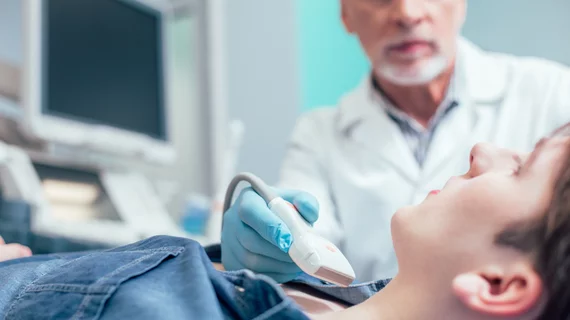5 guiding principles for establishing a point-of-care ultrasound program
Imaging leaders should follow five guiding principles when seeking to establish a point-of-care ultrasound program in their institution, according to a new analysis published Saturday in JACR [1].
POCUS adoption is rapidly accelerating outside of the traditional realm of diagnostic radiology departments, bringing many associated challenges. These include placing the technology in the hands of inexperienced providers, along with issues around maintenance, support, proper use, data security and potential turf battles.
Stanford Health Care recently established its own program, which is based on a model comprised of physicians and a program manager who works closely with hospital-based operational teams.
“We have found collaboration between various support personnel and buy-in from all stakeholders to be keys to our program’s success,” lead author Luyao Shen, MD, co-director of POCUS in Stanford’s Department of Radiology, and colleagues wrote Nov. 18. “By clearly outlining levels of use, we are able to differentiate POCUS from diagnostic ultrasound in radiology and other level 4 ultrasound providers without overlap or interference. We have learned a great deal in the multi-year process of developing our multidisciplinary POCUS program as described in this article. We hope that our experience may be useful to those in the process of structuring in their own POCUS program.”
Shen et al. detailed five POCUS principles for others to adopt:
- Safety key: Providing high-quality and safe patient care is the primary driver for developing a point-of-care ultrasound program framework and related governance committee. As use expands, oversight and controls are needed in program supervision, training, credentialing, billing, electronic medical record/image archival workflows, quality assurance and control, and equipment procurement and management.
- POCUS a privilege: All providers performing POCUS exams should be trained, privileged and credentialed by the hospital prior to use.
- Communication and transparency: Leaders must promote an efficient and collaborative learning environment and inform department heads about the POCUS program guidelines. Conversely, each department informs POCUS leadership, IT and biomedical engineering of any equipment purchases. Best practices are shared at the POCUS governance committee meetings.
- Record keeping: Clinical POCUS studies should be documented and retrievable within the patient’s medical record, as should the images themselves.
- Central management: While each medical department is responsible for purchases via the proper processes, biomedical engineering should centrally manage and track all equipment.
Read much more about the Stanford POCUS program at the link below.

